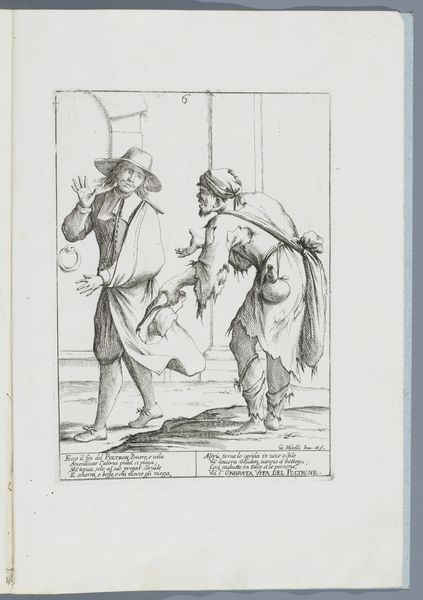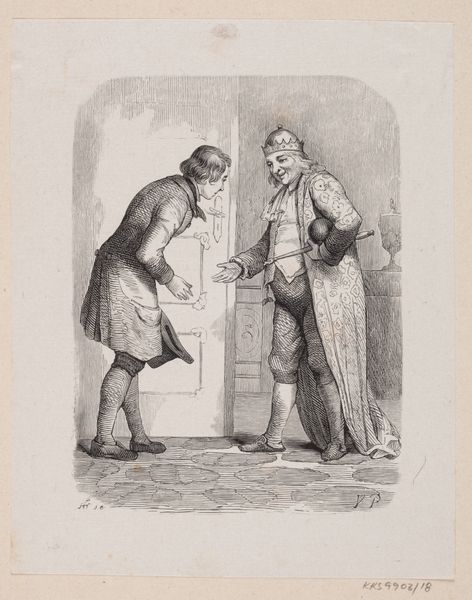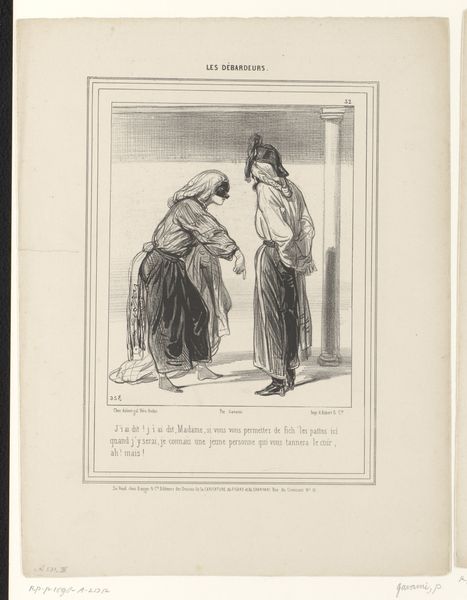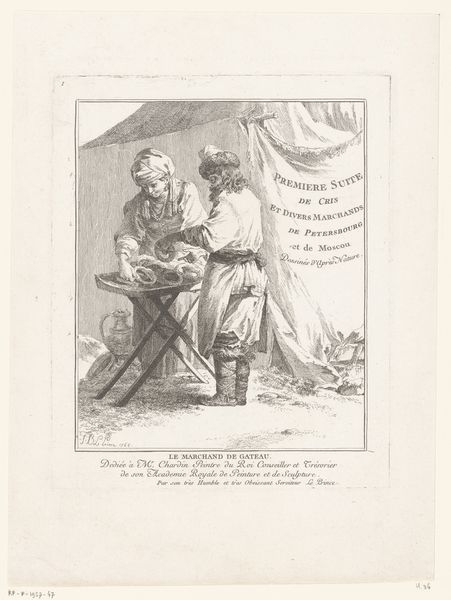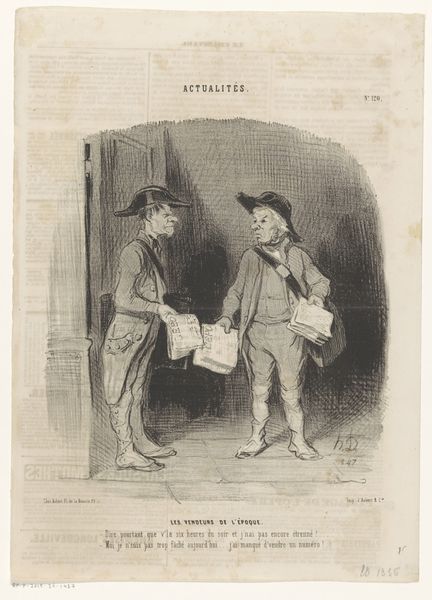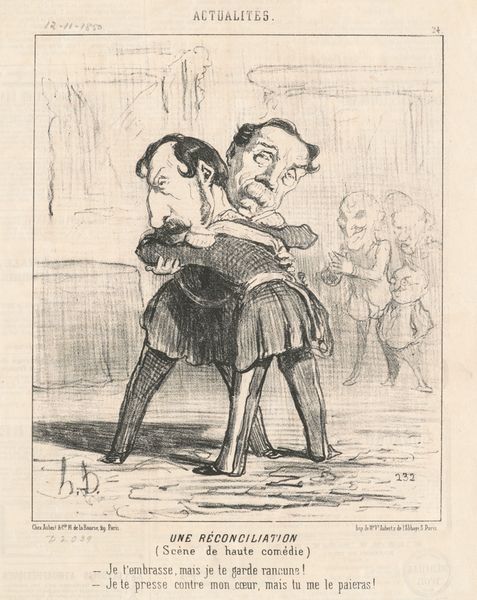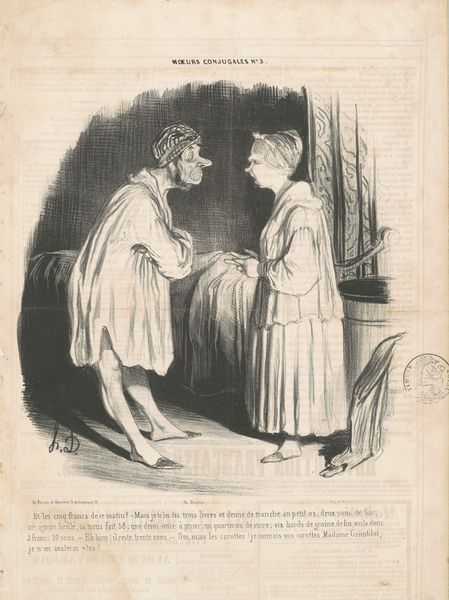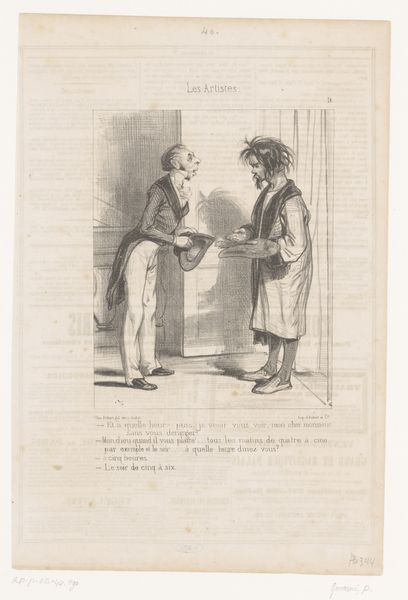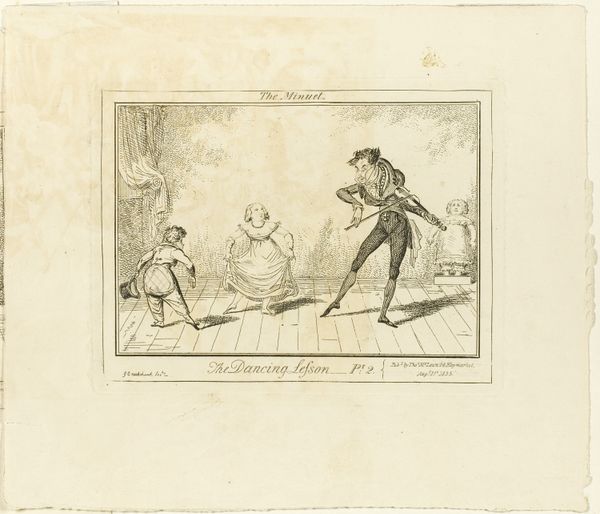
drawing, lithograph, print
#
drawing
#
16_19th-century
#
lithograph
# print
#
caricature
#
figuration
#
romanticism
#
cityscape
#
genre-painting
Copyright: National Gallery of Art: CC0 1.0
This lithograph, by Honoré Daumier, presents a scene of Parisian street life. Here, we observe the figures of two men, their garments and postures speaking volumes about their station in life. One man is dressed in what appears to be a Bedouin-style outfit; while the other, in more modern attire, leans on a cart. Observe the attire. The so-called Bedouin dress becomes a marker of exoticism, a costume donned to navigate and perhaps exploit the Parisian fascination with the "Orient." It's a symbol of the cultural appropriation often seen when societies collide. This relates to similar masquerades and imitations throughout history—think of Renaissance festivals emulating ancient Roman garb, or modern reenactments of historical events. There’s a psychological weight to this mimicry; a longing to connect with something perceived as different, more authentic. Yet, this very act can strip the original culture of its true meaning. The psychological tension between admiration and exploitation reveals much about how societies perceive and interact with one another. This theme, like a returning ghost, shows the cyclical nature of cultural perception, constantly reappearing with new contexts and new faces.
Comments
No comments
Be the first to comment and join the conversation on the ultimate creative platform.


